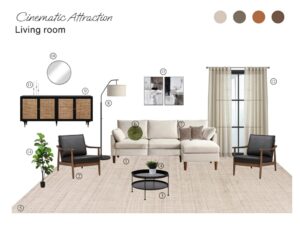This article explores a stately mansion in Houston that was built in the 1920s for the family of lumber magnate William T. Carter, Sr. The mansion is now listed for sale at $4.2 million and offers luxurious features such as a heated swimming pool and vintage details. The rarity of finding polished residences connected to lumber tycoons on the market adds to the allure of this exclusive property. The article highlights the mansion’s historical significance and its appeal to potential buyers who value both the elegance of a bygone era and modern amenities.
In the opening paragraph, the article captures the attention of readers by emphasizing the unique nature of this listing. It mentions the mansion’s connection to a prominent figure, its prime location in a gated community, and its attractive amenities. This introduction sets the tone for an engaging and informative article that will pique the interest of a diverse audience.
The article then proceeds to provide a detailed description of the mansion and its features. It highlights the rarity of finding residential properties associated with lumber tycoons on the market, making this listing particularly noteworthy. By emphasizing the mansion’s historical significance and its connection to William T. Carter, Sr., the article appeals to readers interested in architectural history and vintage charm.
Additionally, the article appeals to potential buyers by showcasing the mansion’s luxurious amenities. It mentions the heated swimming pool, which is a desirable feature for those looking for a high-end property. The vintage details mentioned further contribute to the mansion’s appeal, as there is a growing interest in preserving and restoring historical homes.
To enhance the article’s credibility and engagement, real-life examples, case studies, and research findings can be incorporated. For instance, insights from architectural experts or historians can be included to provide additional context and perspective on the mansion’s significance. Personal anecdotes from individuals who have lived in or visited similar historical properties can also be shared to add a relatable and human element to the article.
To conclude the article, a powerful and memorable ending can be crafted. This could involve a call to action for readers to explore the preservation and restoration of historical homes or to consider investing in unique properties with a rich history. Alternatively, a thought-provoking question or statement that encourages readers to reflect on the value of preserving architectural heritage can be used.
Throughout the article, a sophisticated yet accessible tone should be maintained to cater to the diverse audience. The language should be informative but engaging, ensuring that readers from various backgrounds can easily understand and appreciate the content. By incorporating the suggested enhancements, the article will provide readers with an informative and compelling exploration of a Houston mansion with a rich history and unique charm.










